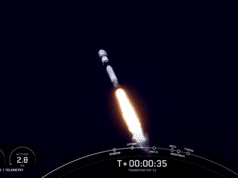Kinetica, the streaming data warehouse that combines historical and streaming data analysis with powerful location intelligence and AI, has announced a new Tableau extension. Kinetica’s new extension overcomes previous limitations to visualizing billions of geospatial data points within Tableau, helping customers filter data reflected in real time on their map, track objects through time and space, or detect patterns with heat maps.
Brian Matsubara, RVP of Global Technology Alliances at Tableau, said, “Seeing and analyzing location data at massive scale is crucial to modernizing business intelligence. Tableau’s ease of use and flexibility with Kinetica’s powerful location intelligence and AI will bring next-generation geospatial capabilities and map visualizations using billions of data points directly to our customers’ Tableau dashboards.”
Leveraging the Kinetica extension in Tableau will allow users who are not geospatial experts to incorporate location data into their analysis in the familiar Tableau interface at scale. Previously, geospatial visualizations in business intelligence platforms were constrained by client-side rendering technologies that are limited to displaying only several thousand records at once. Now, Tableau users can tap into Kinetica’s accelerated geospatial visualization capabilities on the server side, to instantly display massive amounts of location data on a map in Tableau. By avoiding the limitations of traditional client-side visualization, like downsampling and simplification prerequisites, Kinetica’s server-side rendering allows Tableau users to interact with and navigate millions or billions of points dynamically.
Nima Negahban, CTO at Kinetica, said, “Kinetica was built to treat the unique challenges of geospatial analytics as a priority. For Tableau users to tap into our distributed geospatial engine, and visualize a nearly unlimited amount of location data, represents a breakthrough for geospatial analytics as a part of business intelligence.”




